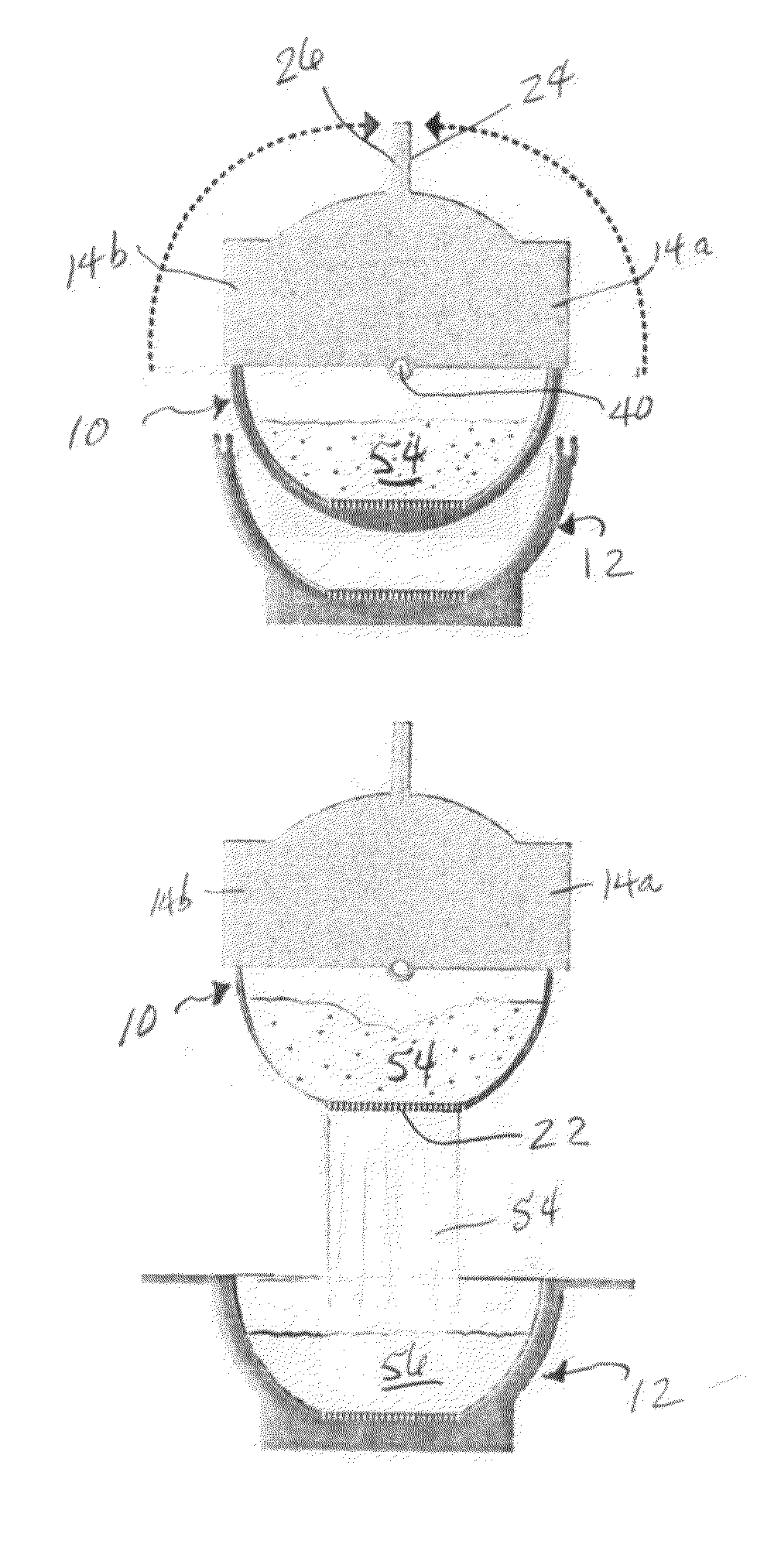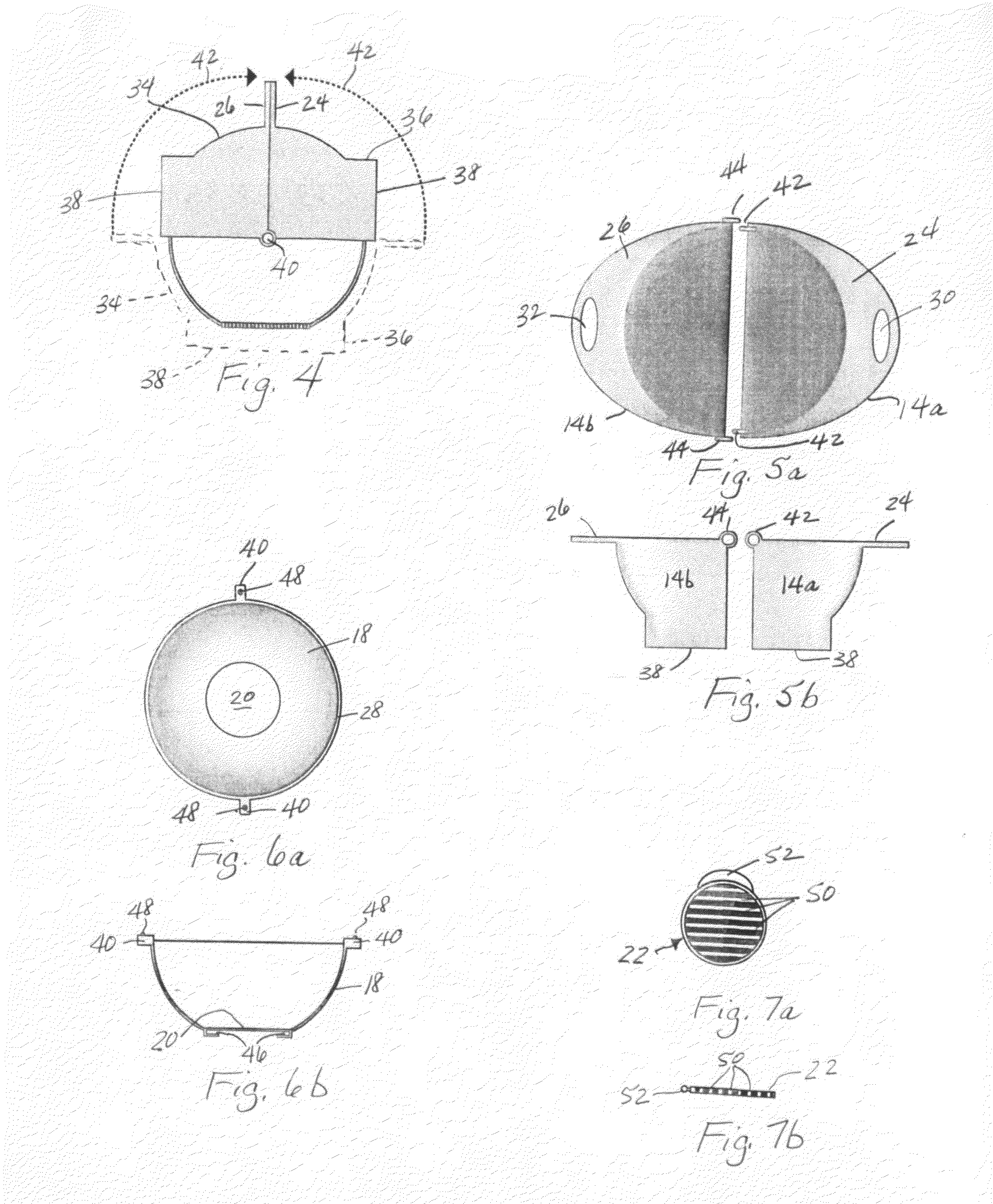Easy to clean animal litter container
- Summary
- Abstract
- Description
- Claims
- Application Information
AI Technical Summary
Benefits of technology
Problems solved by technology
Method used
Image
Examples
Embodiment Construction
[0031]The plethora of different animal litter containers and varieties of litter materials described in the patent art and available in the marketplace that claim to minimize the inconvenience of having an indoor animal waste disposal container and to make the chore of cleaning this container easier is almost overwhelming. While currently available litter materials have achieved some success in masking odors and causing animal wastes to clump so that the removal of waste and only the soiled litter is easier, the waste and soiled litter must still be removed and the litter container must still be cleaned to maintain a sanitary and healthy environment, both for the pet animal and for the pet owner. Many litter containers are easier to clean now than in the past, but there remains considerable effort involved to keep these containers and their surroundings as clean and sanitary as they should be. The present invention provides an animal litter container that minimizes contact with soil...
PUM
 Login to View More
Login to View More Abstract
Description
Claims
Application Information
 Login to View More
Login to View More - R&D
- Intellectual Property
- Life Sciences
- Materials
- Tech Scout
- Unparalleled Data Quality
- Higher Quality Content
- 60% Fewer Hallucinations
Browse by: Latest US Patents, China's latest patents, Technical Efficacy Thesaurus, Application Domain, Technology Topic, Popular Technical Reports.
© 2025 PatSnap. All rights reserved.Legal|Privacy policy|Modern Slavery Act Transparency Statement|Sitemap|About US| Contact US: help@patsnap.com



